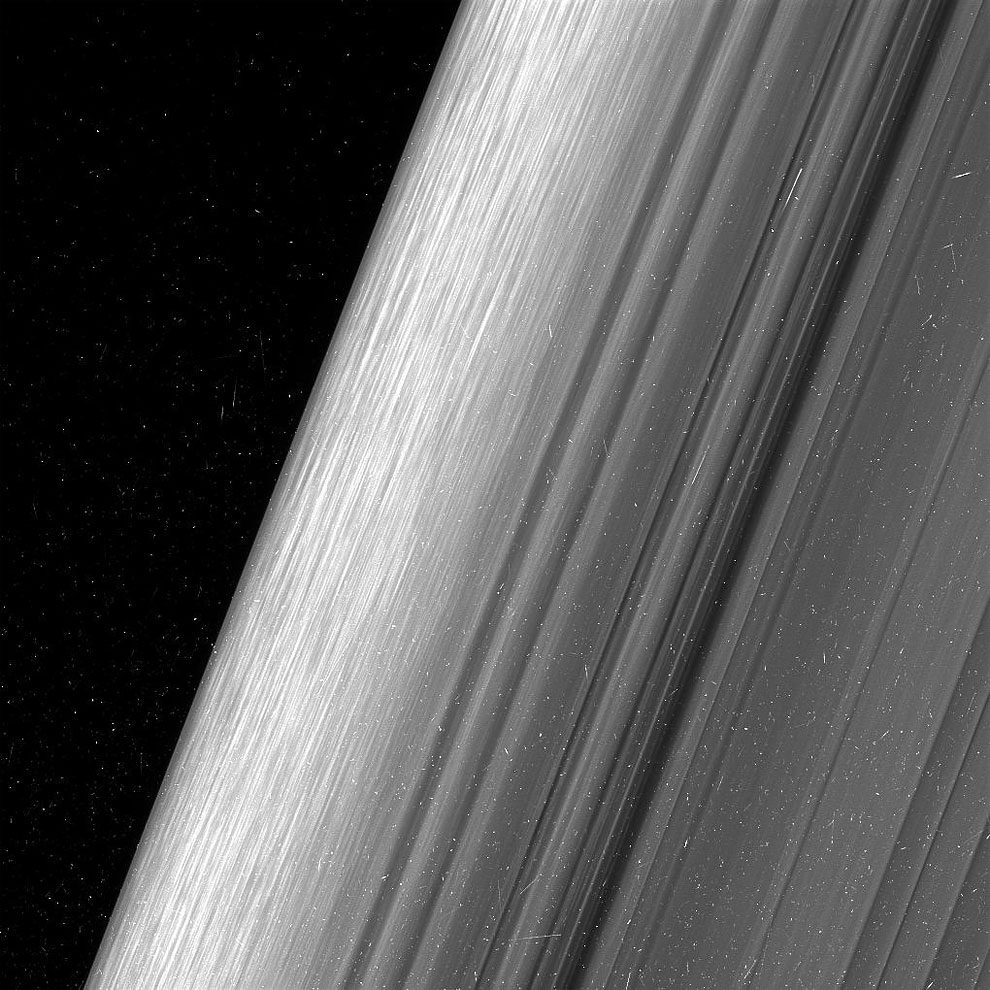Stunning New Close-Ups Show Saturn’s Rings At Double The Detail We’ve Ever Seen
NASA’s Cassini spacecraft has entered its “ring-grazing” phase as it approaches the planet’s icy orbiters. As part of its mission, the craft has transmitted images of the rings at twice the resolution that humans have even been able to achieve previously (see full resolution photos here). Details as small as 550 meters, or a few hundred feet smaller than earth’s tallest building, are visible in the photos. Continue reading »
Monster Hurricane on Saturn
NASA’s Cassini spacecraft has provided scientists the first close-up, visible-light views of a behemoth hurricane swirling around Saturn’s north pole. In high-resolution pictures and video, scientists see the hurricane’s eye is about 1,250 miles (2,000 kilometers) wide, 20 times larger than the average hurricane eye on Earth. Thin, bright clouds at the outer edge of the hurricane are traveling 330 mph(150 meters per second). The hurricane swirls inside a large, mysterious, six-sided weather pattern known as the hexagon.
“We did a double take when we saw this vortex because it looks so much like a hurricane on Earth”, said Andrew Ingersoll, a Cassini imaging team member at the California Institute of Technology in Pasadena. “But there it is at Saturn, on a much larger scale, and it is somehow getting by on the small amounts of water vapor in Saturn’s hydrogen atmosphere”.
A major difference between the hurricanes is that the one on Saturn is much bigger than its counterparts on Earth and spins surprisingly fast. At Saturn, the wind in the eye wall blows more than four times faster than hurricane-force winds on Earth. Unlike terrestrial hurricanes, which tend to move, the Saturnian hurricane is locked onto the planet’s north pole. On Earth, hurricanes tend to drift northward because of the forces acting on the fast swirls of wind as the planet rotates. The one on Saturn does not drift and is already as far north as it can be.
The north pole of Saturn, in the fresh light of spring, is revealed in this color image from NASA’s Cassini spacecraft. (NASA/JPL-Caltech/SSI) Continue reading »



